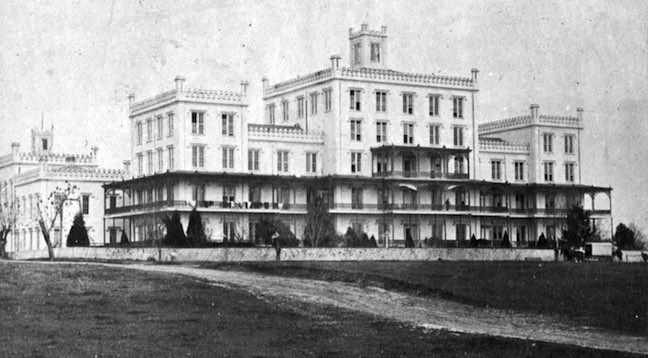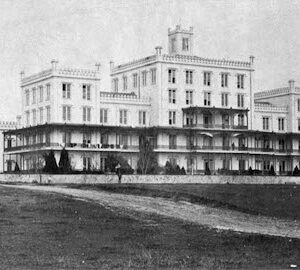Tag: Louisiana School for the Deaf (Baton Rouge LA)
 Wikiepedia says: The Louisiana School for the Deaf is a state school for deaf and hard-of-hearing students in Louisiana, located in Baton Rouge, the state capital. It was established in 1852 as a joint school for blind students. In 1860, its first purpose-built facility was completed and admired as an elegant monument to philanthropy. The schools were divided in 1898, and in 1908, Louisiana School for the Deaf was renamed.
Wikiepedia says: The Louisiana School for the Deaf is a state school for deaf and hard-of-hearing students in Louisiana, located in Baton Rouge, the state capital. It was established in 1852 as a joint school for blind students. In 1860, its first purpose-built facility was completed and admired as an elegant monument to philanthropy. The schools were divided in 1898, and in 1908, Louisiana School for the Deaf was renamed.
Before 1838, wealthy families provided private tutors for their deaf children (as for their hearing children) or paid for the children to attend a school for the deaf outside Louisiana. There was no public education in the state. The 1838 Louisiana legislature passed an act on January 16, 1838 to provide state-supported education of deaf white children by enrolling them at other state schools. As a result, 11 children from Louisiana were enrolled at state cost at the Kentucky School for the Deaf.
In 1852, Francis Dubose Richardson, a member of the General Assembly, introduced a bill to provide $25,000 and empowered a Board of Administrators to oversee the establishment of the Louisiana Institute for the Deaf and Dumb and the Blind. The bill was passed in March 1852 and approved by the governor. The seven board members were authorized to buy land, make contracts, and do whatever was necessary to begin the school. The first school was held in the former Baton Rouge College (now the Mayflower North campus). The board recruited James S. Brown from the Indiana Asylum of the Deaf and Dumb as superintendent. On December 8, 1852, the 11 Louisiana students and Brown arrived in Baton Rouge.
Notable achievements during 1852–1860 were completion of the state Administration Building on the campus, just south of Louisiana State University in Baton Rouge. The building was acclaimed as one of the most elaborate and elegant for that era. The new Administration Building was completed in 1858 and stood for 99 years. It was described by the Daily Gazette and Comet on July 21, 1857 as “the proud monument to the Christian philanthropy of the Sugar Bowl State.”
The school hired a woman teacher, and began to include vocational training as part of the program. At the request of the school, the legislature appropriated funds for the purchase of a printing press and fonts. The school taught printing as a vocational skill. A carpenter on campus was enlisted to teach carpentry skills.
In 1860, the school had 60 students. By 1862, there were 72 students. As the fighting of the American Civil War drew closer to Baton Rouge during the Mississippi campaign, parents pulled their children out and only orphans remained at the school. Early in 1862, staff and students spotted gunboats on the Mississippi. The invaders found the school an easy target. A cannonball was said to be shot through the wide first-floor hall, landing at the rear of the school. Principal Martin and matron Mary Dufrocq ran to the riverbank a half-mile away and begged the commander to stop shooting and save the school. The Union Army took over the school as a hospital to care for federal soldiers.
In January 1863, the federal troops again seized Baton Rouge and the school, using it as a temporary hospital. Schooling continued. The soldiers ruined the printing equipment. But there was an advantage to having troops on site; General Augur permitted full rations to the school. From 1863 to 1867, the children had enough food and fuel.
Showing the single result
